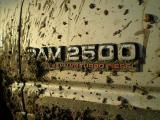- Replies 15
- Views 1.9k
- Created
- Last Reply
Top Posters In This Topic
-
Mopar1973Man 5 posts
-
IBMobile 3 posts
-
CUMMINSDIESELPWR 3 posts
-
Joe_Pool 2 posts
Most Popular Posts
-
when you pull suction from the bleeder nipples you get air coming in via threads. this is why i always bleed positive pressure from master cylinder. one thing over anything when bleeding h
-
Weird ive always full stroked the pedal to make sure push all the trash out. Still OEM master at 416k miles no seal issues. On super black systems I disconnect the hoses from the calipers
-
Pressure from master cylinder end is my preferred method. If you want to vacuum bleed the system try pulling the bleeder nipples and coat the threads with paste type anti seize compound (h





Got around to the 30k mile interval so it was time to flush the brake fluid. Followed the procedure as per the FSM. I use an air powered tool that pulls the fluid through back from the master cylinder to flush. I couldn't help but notice that both rear brakes were producing air bubbles no matter how long I was running new fluid through them (rear passenger was more noticeable than rear driver). Both front brakes had zero air bubbles which is I why I'm a little confused! I did not get around to pulling the drums off to inspect for leaks, but is it safe to condemn the wheels cylinders being bad? I'm going to double check with tracing the brakes lines for the rear end but I haven't had any loss of fluid in the master cylinder or on the ground. I think the brake pedal feels normal (quite firm/resistance is present) but I honestly don't know what a "spongy" pedal is like.
I know there's an upgrade that can be done with the wheel cylinders as I searched on a couple other threads. Although it's early on a diagnosis, but could someone post a part number just in case? I understand they are relatively inexpensive.